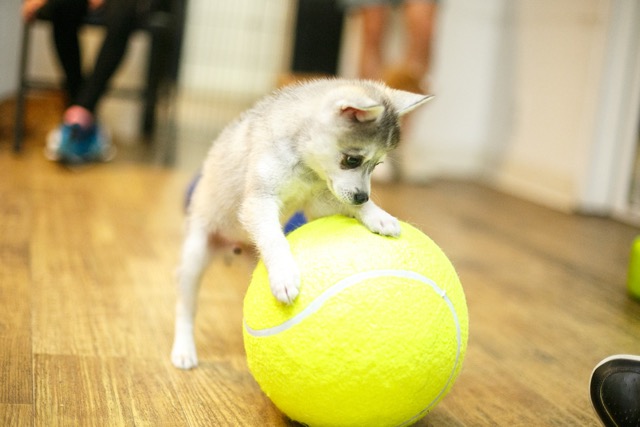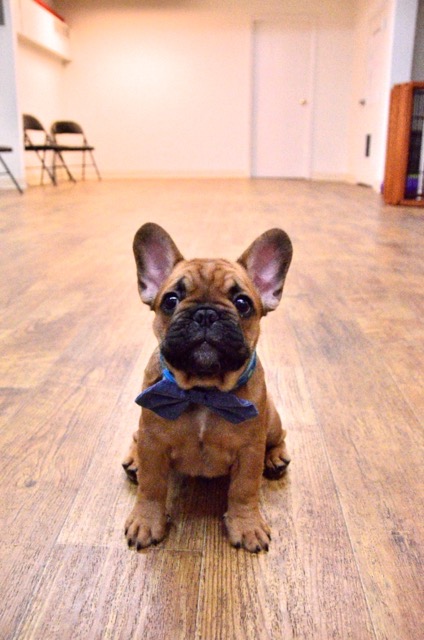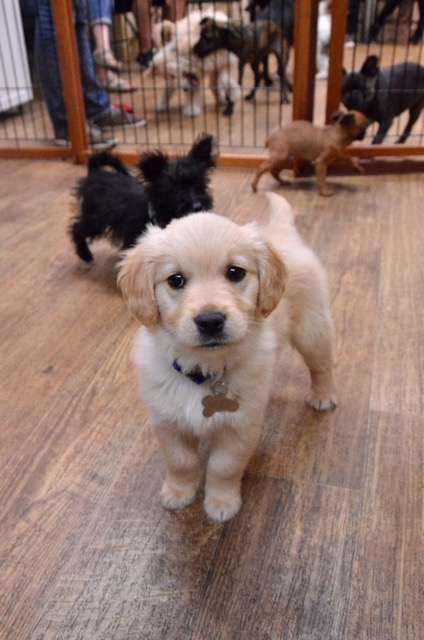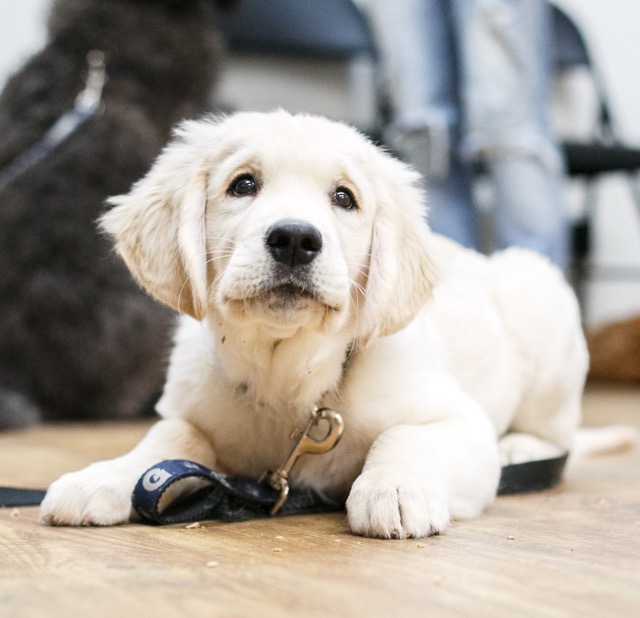
Effective Puppy Training Techniques
Puppy Training, or raising a puppy effectively, begins the day you bring your puppy home. Every interaction you have with your puppy is a learning opportunity. Every interaction your puppy has with their environment teaches them some sort of lesson. Your puppy needs no time to settle in before training begins because your puppy is learning from the moment the enter your home. Start right away, gently and lovingly raising your puppy using reward based training techniques and having age appropriate goals.
Positive reinforcement is the best approach to teaching all animals of all ages. Setting your puppy up for success by implementing basic management tools, in a safe environment will help you achieve your goals and make raising and training your new puppy far less difficult than you might imagine.
Essential Tools for Puppy Training
- A Crate or Kennel
- A pen or puppy proof area (optional in some cases)
- A light weigh 6 foot leash for use indoors (and another leash that may be sturdier for out door use)
- Chew toys (something edible in part or in whole)
Puppy Obedience Training Tips: Supervision and Restriction
Keep in mind that being positive does not mean being permissive. You must supervise and restrict your pups freedom much the same way you would a human toddler Close supervision will help to prevent potty mishaps, inappropriate jumping and barking, destructive and dangerous chewing, along with a multitude of other possible mischiefs and mishaps. With that in mind, your puppy must be crated or in a safe puppy proof area when you can not supervise them. When they are out and about in your home, it is best to restrict their freedom by having them on a leash. If your puppy is on a leash close by you they will not be learning all sorts of bad habits you then need to unteach them. We strongly encourage all new dog owners, especially our puppy parents, to prevent unwanted behavior from occurring, using management tools to set the puppy up for success. Then you can focus on reacting to your puppies good behavior in a positive, reinforcing way.
Remember, based on your responses your puppy learns what behavior works and what doesn’t. If jumping up on you works to get your attention, your puppy will keep on jumping. If pulling you down the street on leash has you following along, then that approach will be your puppy choice. If whining and barking gets you to open the crate door, they will continue to do that. In general, notice if your pups behavior seems pushy or impulsive. Try not to reinforce unmannerly and unruly behavior while you begin to teach and rewards better manners. Be patient, puppies aren’t born with manners any more than children are. The good news is that puppies grow up to be mannerly adults a lot faster when you consistently reward good behavior and prevent undesirable behavior from becoming a habit. Practice make perfect, so let’s not practice the wrong thing. Set them up to be successful rather than waiting for them to fail and then trying to correct it.
How to Start Training a Puppy
One of the easiest and gentlest ways to get started on early puppy manners training is using a method we refer to as capturing. When your puppy is doing something you like, let them know.
Some examples may include:
- Walking with a loose leash.
- Paying attention to you.
- Relaxing quietly at your feet with a chew toy.
- Greeting you without jumping.
- Waiting to be let out of the crate without vocalizing.
- Going potty in the correct spot.
Our puppies often behave with manners even without us actively prompting them to do so. When they do, let them know you love the behavior they have chosen all on their own by rewarding them with your attention, praise, and a tasty treat.
Very young puppies not only have the capacity to learn, but are programmed by nature to be more open to learning at this stage of development than at any other. This means we allows should begin teaching them as soon as they come home. We can use the capturing method to train our puppies opportunistically throughout the day and night. More formal style training sessions are best done in several short sessions a day. The younger the pup the shorter the attention span. There can be a great deal of variation among individual puppies as well.
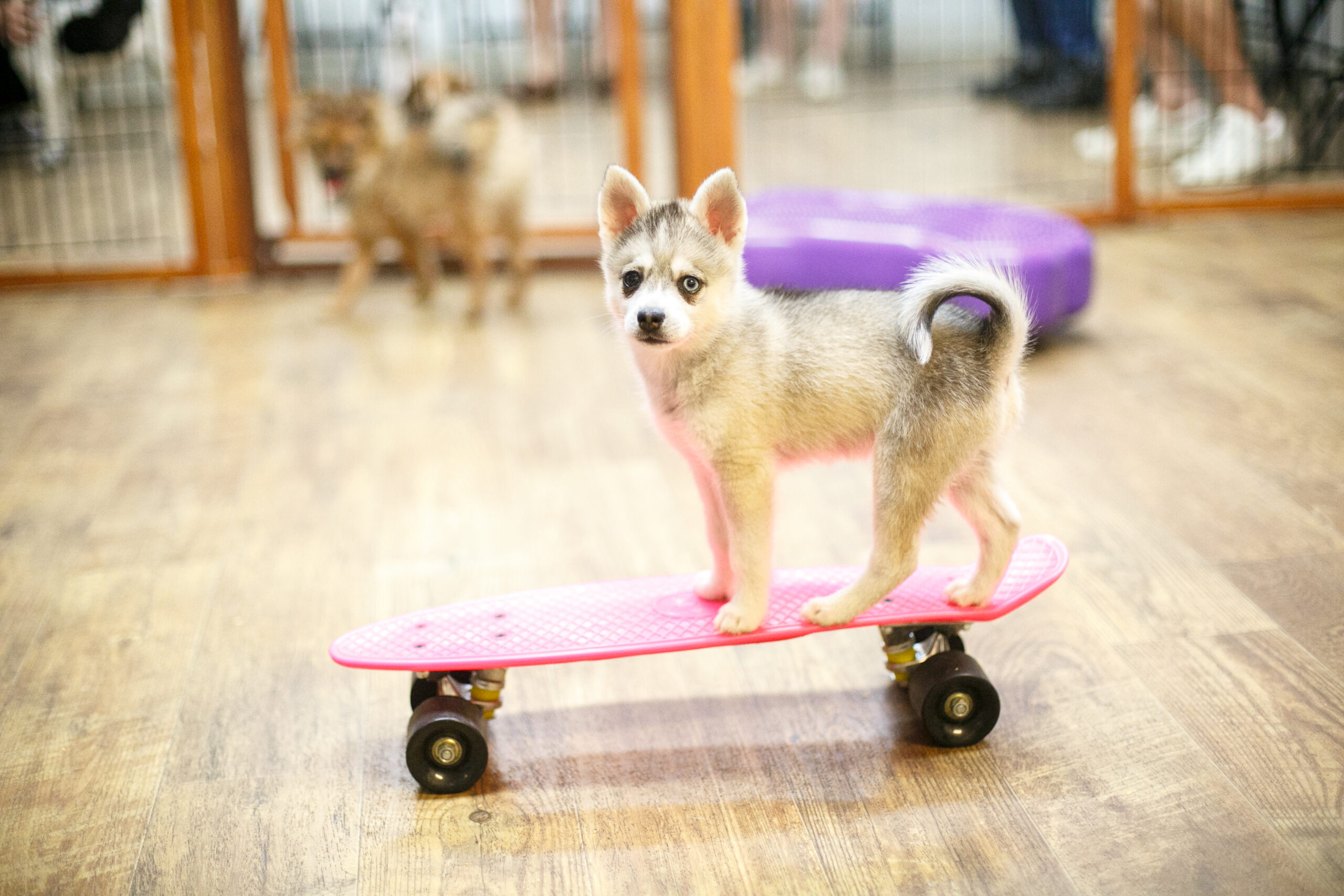
What you will need for Puppy Training Sessions:
- A leash – helps to keep them close by.
- A non-distracting environment so your puppy has a calm place to begin learning new things.
- Soft treats that can be broken into tiny pieces. You’ll want to pick something healthy because you want to provide your pup with lots of information via treats. Pick something you want to feed your pup so you will be generous, thereby motivating your young puppy to love learning.
- A sound marker such as the word “yes”, “good”, or a clicker, to sound off the moment your pup does what you are training them.
- A clear idea of what you are training, what it looks likes, and what you will reward.
- A caring and enthusiastic attitude about teaching you puppy, and joy in watching your young puppy learn and succeed.
Start in a non-distracting environment. Post nap and potty break is usually a good time. If during the training session your pup suddenly looses focus, this may indicate that it’s time for a potty break or the session is going on too long. You can extend the lesson time by taking play breaks with toys or switching over to doing gentling/handling exercises. Generally, 3 to 7 minutes is enough time for your puppy to work hard at learning a new skill.
If excessive energy is the battle of the moment, do a play and train session. Allowing your pup to play with you and a toy, while intermittently throwing in some manners training to develop impulse control and help teach your puppy how to quickly calm down when getting excited. There should be some rules to engagement to avoid bad habits and poor play style. A puppy who learns to have manners in play will more easily learn to have manners in life.
What Should I Train my Puppy First
There are so many things we will need and want to teach our new puppy so they can grow up happy and be wonderful adult canine members of our families. So many skills are important that it can be tricky to prioritize, but let’s try to have goals and realistic expectations.
We will want to get started on a few key items right away:
- Potty training
- Crate training
- Alone time
- Gently discouraging typical but problematic behaviors such as vocalizing, mouthing, and excessive jumping
Potty Training
Whether you will be starting with potty pad training or having your puppy learn that outside is were elimination happens it is your job to have your puppy in the right place at the right time. A young puppy (8 weeks old plus or minus a week) has very little bladder or bowel control. We need to give the young puppy frequent opportunities (approximately every two hours during awake daytime hours) to potty in the right place. A young puppy will most likely also need one to two middle of the night trips to potty. The good news is that pups learn to hold overnight fairly quickly, especially when water is restricted a couple of hours before bedtime to set them up for success.
There is a considerable amount of variability in successful schedules for individual puppies of all ages. Here are some important factors to keep in the forefront of your mind when planning potty break trips for your puppy. Puppies tend to need to pee when they wake up, whether it is a nights sleep or a daytime nap. They also will be triggered to pee or poop when they are active, running around playing or getting exited by a family member arriving home. With this in mind a general cycle in your pups schedule would repeat as follows: wake, potty, aerobic activity (toy play, recall training games), non-aerobic activity (settling on a dog bed or blanket with a chew toy, basic manners training like teaching sit and down), nap time/crate time/alone time, and then the cycle begins again. Wake, potty, active play, chill out time, nap.
Meal times will be factored into your pups schedule too. Young pups (6 to 8 weeks) will tend to need to potty right after they eat. The urgency to potty will diminish as the weeks go by, allowing for meals to be given in their crate followed by a nap. This structure becomes a wonderful way for your puppy to be able to practice alone time in their crate in a positive way. They come to associate meal time and nap time with crate time. Your presence during these activities becomes less important.
If your puppy drinks a lot of water they may need to pee sooner than you had scheduled. Keeping track of a pups water intake is essential for successful potty training. It is advisable to not only keep track, but to regulate water intake by offering them water numerous times throughout the day rather than leaving it available for them to travel to on their own. I like to keep the pups water bowl in a place i frequent, next to my kitchen sink, so I never forget to offer my pup water throughout the day.
Your first responsibility to your pups potty training success is to have them in the right place at the right time. Your second mission is to make sure they know how right they are when they go at the legal toilet whether that is the wee wee pad, potty patch, or concrete sidewalk. To communicate effectively to your puppy you will want to give them very tasty treats for a job well done. You can break one or two soft yummy treats into 6 to 8 pieces and give these to your puppy while lovingly praising them. This way your puppy will be clear that peeing in this location is a very good thing, therefor they will be highly likely to do that again. The experience of receiving treats and praise when the puppy performs a successful potty break will be markedly different from when you have a scheduling mishap and your pup potties on the floor in your home. If that happens, just move the puppy away from the mess and clean it up with no drama. Scolding your young puppy can have a bad effect on your new relationship building and make your puppy wary of going potty around you. It is very difficult to potty train a puppy who is afraid to eliminate in front of people.
Crate Training
The 3rd key to success is prevention. Bring your puppy to their potty spot when they wake up and any other time it seems likely they will need to go. If they don’t eliminate bring them back inside but do not give them any freedom to fail. Remember, if you puppy has not just recently gone potty, they are not empty so they are at risk of having an accident. The puppy who is not empty needs to be keep close by, and calm. They could be on your lap or at your feet with a chew toy. Do not use the crate early on in this situation as they may have an accident in the crate. Allow them to stay close by with a chew toy and then try again in 10 to 20 minutes. In time you will adjust the potty break schedule to meet your specific pups needs.
Alone Time Skills
Crate training and Alone time skills are also best introduced right away. You will want your puppy to enjoy napping in the crate during the day and sleeping in the crate during the night. You will want to be close by to let your puppy out when they wake to go potty and to keep the crate positive. In addition to spending rest time in the crate, we can feed our pups their meals and special chew toys in the crate increasing not only positive associations with the environment, but also banking additional time in the crate through the day. Once you know your puppy is comfortable sleeping and eating in the crate, start to make your whereabouts less obvious, so your puppy can learn to spend time alone with and without you home. Provide your puppy with food stuffed toys during crate time to teach self soothing and self pacifying techniques that are critical for avoiding future separation anxiety problems.
The first behaviors you will train are sit, name recognition, and come (see our articles with detailed instructions and tips about how to teach these skills)) . There any more basic manners skills you want your puppy to learn, but socialization to dogs, people, and the world is also very important.
Enrolling your puppy in a puppy training class as well as trainer supervised puppy play groups is a great way to get your puppy the early socialization they need, and manners training off to a good start with the guidance of professional dog trainers. You will want a reputable dog training school that uses reward based training techniques in group and private training sessions, that also offers well run, safe doggy playtime options. As your puppy grows up you will be training more advanced behaviors and skills. Always keep your teaching and your pups learning achievable, positive, and fun. Enjoy the journey and the day to day experience of learning to teach and watching your dog learn from you. Training your dog is not only beneficial in a practical way, it is also tremendously rewarding.
Explore Our Dog Training Courses
Educate your dog with Andrea Arden and her team.
New York | Los Angeles | Connecticut
Share
- Group Classes
- Private Lessons
- Virtual Training
- Puppy Play Groups
- Puppy Training
- Articles & Advice


